BaselWorld was the true opposite of the SIHH, a real festival; in spite of 9 intensive days of my presence, I certainly missed many things, but I couldn’t skip the Opus Eleven, incontestably the watch the most “wow” of the entire exhibition. I followed the news of Gregory Pons in Business Montres on this subject and actually after not easily readable Opus X which was not very segmented compared to the rest of the collection, Harry Winston comes back with Opus Eleven – their idea of the watch inspired me to create these exceptional series.
Harry Winston called on a former collaborator, Denis Guiguet, who returns together with Eric Giroud- a design consultant, the person in charge of the most original Opus – Opus IX that had a phenomenal success.
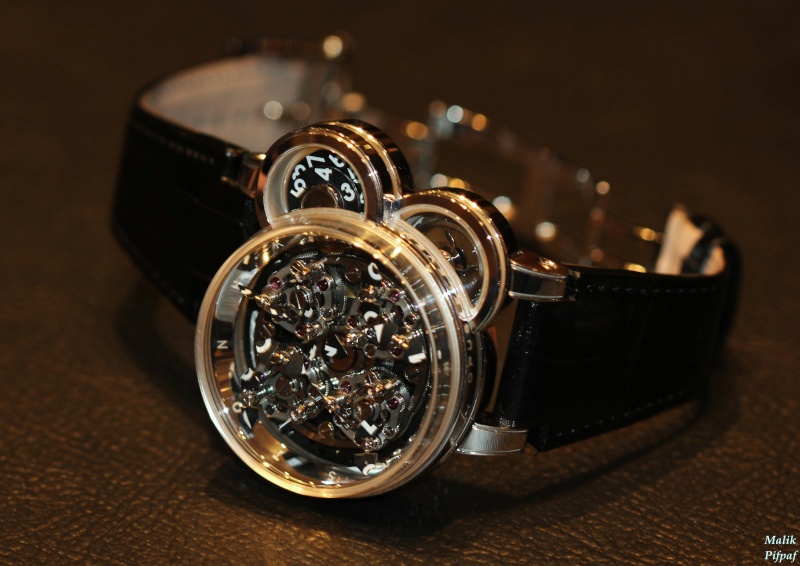
The initial idea of Opus XI was to make burst the time. With the presence of Internet, the globalization, tendency to be less social, more digital when the rhythms are broken by the jet-lags, by things to be finished in urgency, by the foreman of Chinese work, the idea of “temporal explosion” makes absolute sense then. Traditional time reading, with i.e. grande date, its perpetual calendars (in particular Sundays posted in red) etc, refers to a time paradigm (or the rhythms, the seasons, the days of the week) that was codified by a traditional society, religions, feudal codes – all that firmly fixed for centuries. The approach of post-capitalism, financial world, ultra-liberalism and globalization does not tolerate any more these regrettable losses of productivity.
Our moments are daily fragmented to the pieces of communication with every world corner- a call from Germany, Japanese communicator, a hysterical email from the USA. 11:00 pm a panic phone call from a technician, a server failed, there is an urgent need to restore all data. As a result of this fragmentation of time, continual incentive of all new digital gadgets, one must live through the moments of leisure and family gathering more effectively, more quickly, more intensely. It’s becoming more and more difficult to take time to read essays, to play with own daughter one evening. I could go on in thoughts concerning the temporal explosion of the rhythms imposed by our lives 2.0 on at least twelve further pages, but as I wish to continue to explode the audience, I will return to the Opus Eleven.
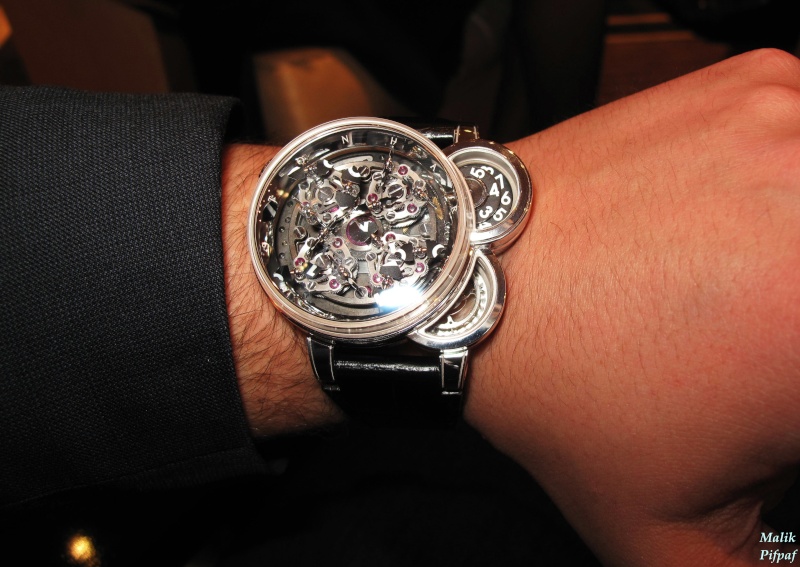
Opus XI does not finally cover more than one percent of all philosophical, society, economic and watchmaking questions; rose by the fabulous paving stone launched in the backwater of the Western time paradigm over twelve hours and 7 days. However, this watch and its creators trew this paving stone.
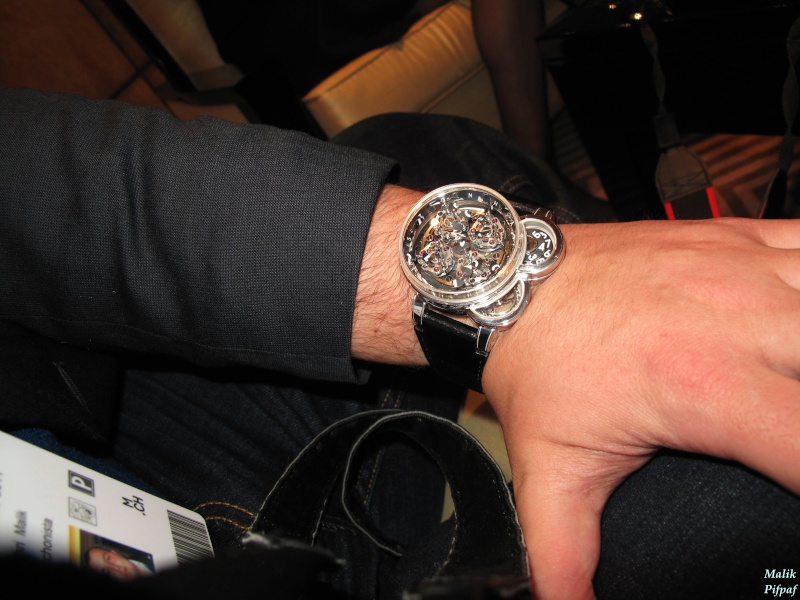
The concept of time reading developed by Denis Guiguet on Opus XI differs completely from its work at MCT, whereas Opuses, the preceding ones, took again existing complications (with the notable exception of the Opus IX which opened the way to the Opus XI from all points of view). The Opus XI integrates a new complication, each satellite carries 3 mini-satellites comprising 2 metal discs marked on double face, one has thus, 4*3*2*2 = 48 metal discs, as it needs 4 metal discs to read the exact time, the watch shows the time over 12 hours (and not 24 like we would have initially expected).
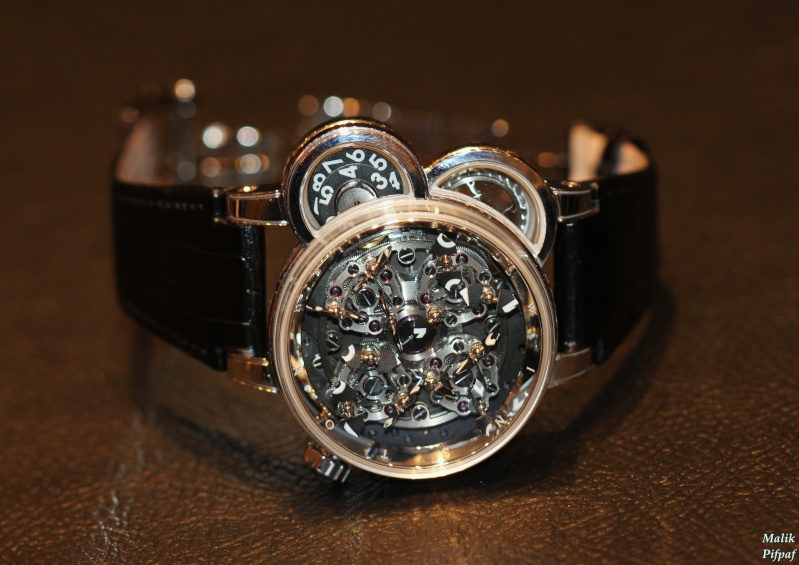
The element that makes the work of Guiguet on Opus XI completely different from the one on Sequential One is that reading of minutes is made on a secondary counter, with double discs, ten, unit. We can find the disc at 45°, I don’t dare to use the term at position of two hours since this concept does not correspond to anything on this watch, at 135° in the third disc we can find the large titanium balance-wheel.
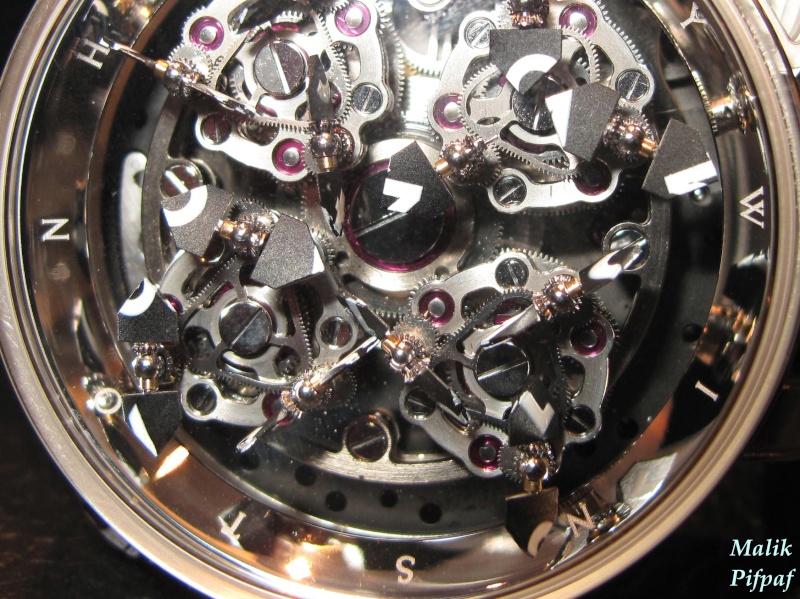
It was developed of completely new energy chain to be able to propel the heavy system of satellites, unfortunately the system was so powerful that finally it was necessary to increase weight of the satellites and the metal discs in order to consume enough of energy and not to cause chronometric divergence. Altogether a heavy industry assisting to the ultra-liberal time, what a beautiful image of crisis!!
An essential illustrative video:
http://www.youtube.com/watch?v=iDu0V-OtBTQ&feature=related
Denis Guiget:

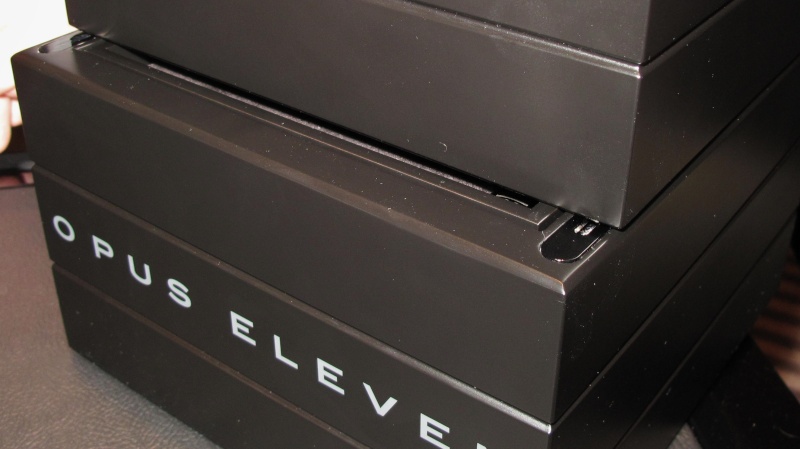
A bursting of time is dimensional in this watch, too. We can observe the trend through watches of independent high-end watchmaking brands like the HL, HL 2.0 of Hautlence, or the one of MB&F - HM3; they put the time reading in volume. But no watch so far has been pushed in its concept of dimension to perfectionism like Opus XI, because it brings with its volumes the third dimension which supplements 2 usual time reading dimensions, temporal dimension, the fourth thus coming to finish the squaring of dimensions.
There is as well an aesthetic perfection, whereas Sequential One MCT is rather prudent, slightly bent square case, the aesthetic standards are fragmented by circular radicalism of Eric Giroud. While his work on Opus IX - resolutely radical in general - was moderated by very soft lines, non-existent angles, and harmonious proportions, on Opus XI, there is nothing reminding it, on the contrary, he goes till the to the extreme in this explosive design.
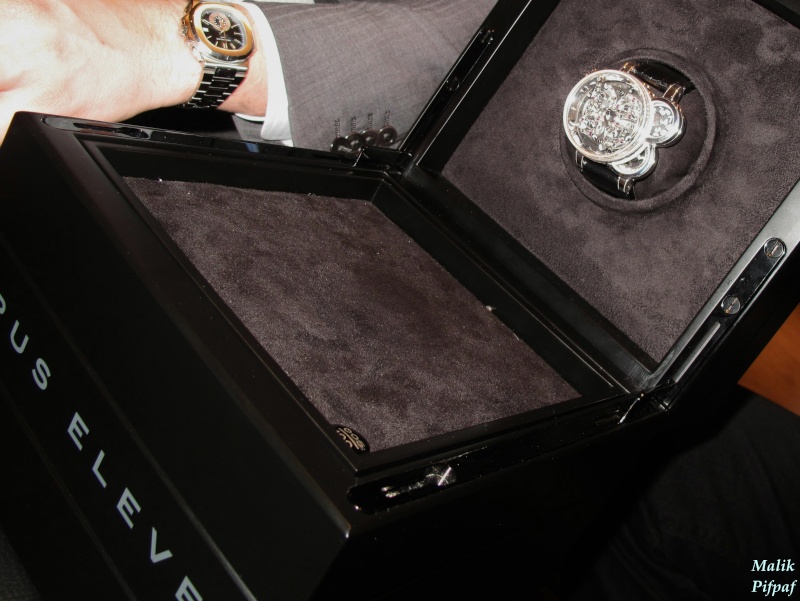
The great aesthetic power of this watch comes in evidence that it perfectly suits on the wrist. The work on the lugs is very serious, while it seems completely unbalanced on the plate, the lugs anchor completely on the wrist. Anyway, I am convinced that to understand profoundly the esthetics of this watch, one should test it on own wrist – that explains quite a few wrists’ shots in this subject.
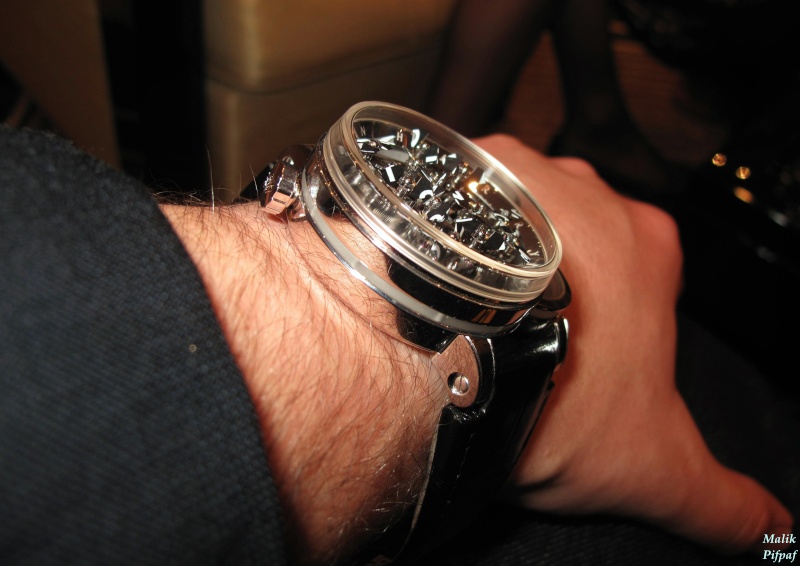
In certain respects, by seeing it, I think about Antiqua from Vianney Halter, Steampunk watch, if it is so, here, one would rather have the wrist Futura, post-Cyberpunk watch, may it be.
The work on glass is very impressive, the transparency processing that leaves us nevertheless puzzled concerning the functionality of the system, once again, a beautiful metaphor about our time of Kairos. This moment of Kairos comes back from elsewhere in the immediate swing of the discs of time reading, a watch to have in all respects.
The choice of deflecting counter is radical in every case, in this work of circles in revolution, I recognize the work of the traditional dials that Eric Giroud made for Heritage Watch Manufactory. The choice to place the balance-wheel in an dedicated opened niche seems to be very judicious since it gives the touch of life necessary to snuffling deadlines between two moments of Kairos where the time deflagrates.
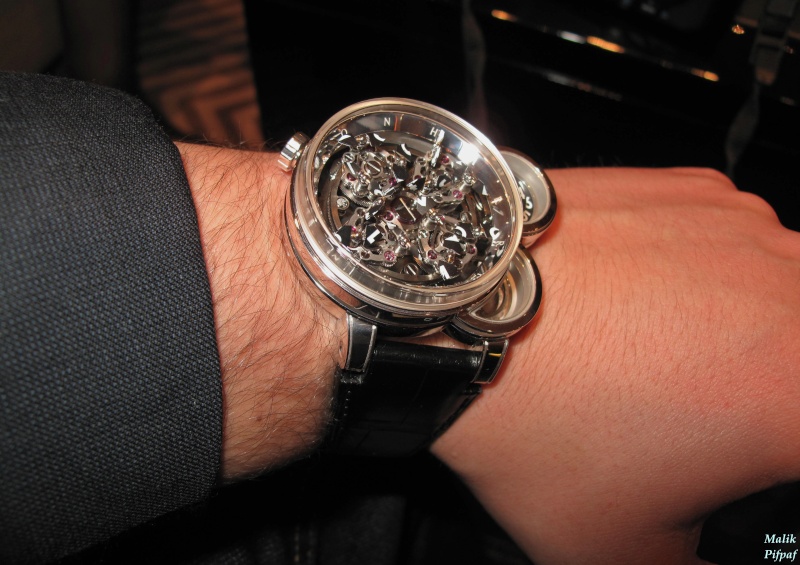
In addition to the idea to present the balance-wheel a dedicated disc, this fact makes dissipate any misunderstanding on the presence of electrical motors in this watch, because one could believe that this impressive gas works full of pinions, with cones, metal discs is fed by tiny servo-motors. The opening showing the balance-wheel and the traditional processing of the movement reassures or surprises on this impressive technical choice.
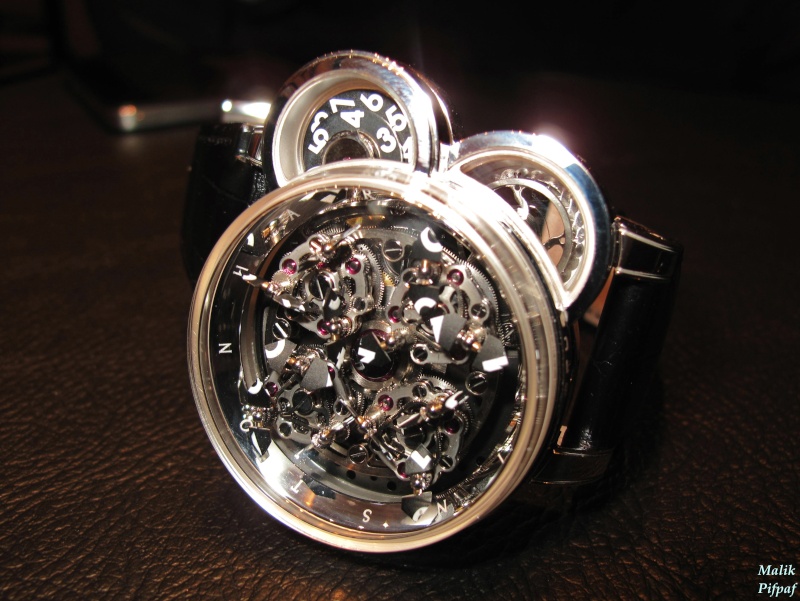
One would believe that the concept of new way of time reading in 3D that was symptomatic in crazy years of the watchmaking industry during the period of 2005-2008 for i.e.Hautlence, MB&F or MCT was far exhausted…Undoubtedly, Harry Winston prepared a surprise and succeeded in making explode this concept. The talents of Guiguet, after the relatively sober MCT and of Giroud with his typically soft contours, were combined to sink in the Cyberpunk, by dynamiting the reading of time.
Aucun commentaire:
Enregistrer un commentaire